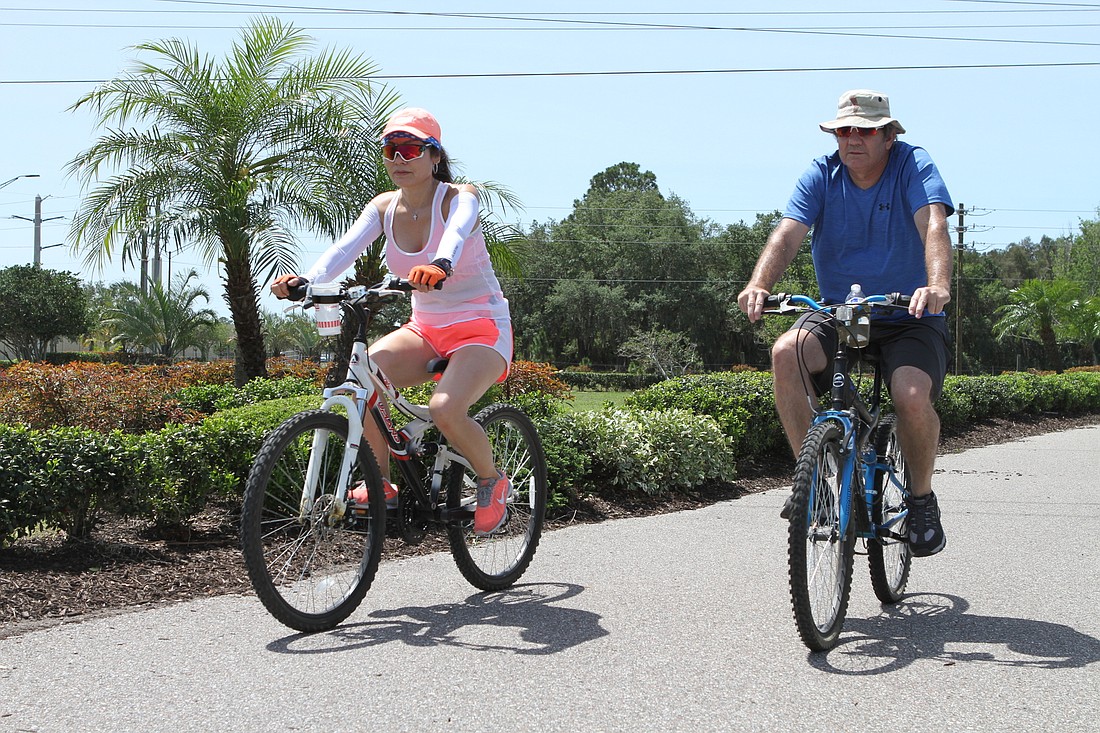- November 30, 2024
-
-
Loading

Loading

As the county extends the popular Legacy Trail, it also is looking for ways to improve connectivity for pedestrians and cyclists along some of the county’s other major corridors.
The county is working to update its bike and pedestrian master plan, which was first adopted in 2013. Patrick Lui, the Sarasota County bicycle, pedestrian and trails coordinator, said the county is excited about the updates.
“The last plan gave us a good springboard for the county to look at how we plan our multimodal connections with their networks of sidewalks and bike lanes,” Lui said. “This update is going to really build off that and enhance it.”
Since September 2019, the county’s consulting company, Tindale Oliver, has been collecting data and meeting with community members to recognize areas of need.
Lui said the new plan will prioritize neighborhood networks and take into consideration the areas the public has identified are in need of enhancements.
Consultant Chris Keller said the update was divided into three components: evaluating the county’s existing conditions, listening to public input and creating recommendations based on gaps in service.
Tindale Oliver’s study shows bicycle network gaps spanning east to west from U.S. 41 to Interstate 75 and north to south from Bee Ridge Road to Clark Road. Pedestrian network gaps are found along Fruitville Road, east of I-75; along U.S. 41, adjacent to Siesta Key; and along Clark Road, east of I-75.
In addition to consultant work, the county also conducting a survey to gauge public input on what the county can do to improve its service.
Out of about 1,300 respondents to date, 55% said they do not walk more often because sidewalks are missing or are in poor condition. Around 66% of respondents said they do not cycle more frequently because the county is missing proper facilities, such as bike lanes or paths.
Around 48% of pedestrians and 70% of cyclists said the county should focus on improvements to major street corridors first, though consultants said the county must consider a variety of options to link different areas.
In addition to the network gap analysis, consultants also completed an equity analysis that considered speed limits, number of travel lanes, areas with high percentages of zero-vehicle households and other factors that could impede mobility.
The study found that the areas with the highest need were located between Fruitville Road and Myrtle Street, north to south, and between U.S. 41 and North Lockwood Ridge Road, east to west.
The consultants also conducted an analysis that examined which roads were the most stressful for cyclists, ranking streets by speed limit and widths of bicycle lanes and vehicle lanes.
A majority of Sarasota’s roads were ranked at the highest level. “As speeds go up, so does the stress of a bicyclist on that roadway,” Keller said.
Between 2013 and 2018, the consultants found there were about 1,600 reported crashes involving a person walking or riding a bike in the county. Of those, 64 (4%) resulted in fatalities, and 380 (24%) resulted in a severe or incapacitating injury.
Streets with the most frequent incidents include the intersections of Bahia Vista Street at Beneva Road, Bee Ridge Road at McIntosh Road and Stickney Point Road at Gateway Avenue.
“One of our goals with this master plan is to really look at ways of eliminating those fatal and incapacitating injury crashes,” Keller said.
To help minimize crashes, county staff hopes county leaders will adopt a policy that emphasizes safety for all and makes design choices that are forgiving of mistakes made by cyclists, pedestrians and drivers.
Although no roads have yet been finalized, a preliminary map shows that tier one projects could include pedestrian improvements in North County near Myrtle Street and along South River Road in South County.
Tier one bike improvements would include Beneva Road in North County and South River Road and Jacaranda Boulevard in South County.
The consultants hope to have draft plans ready by November.